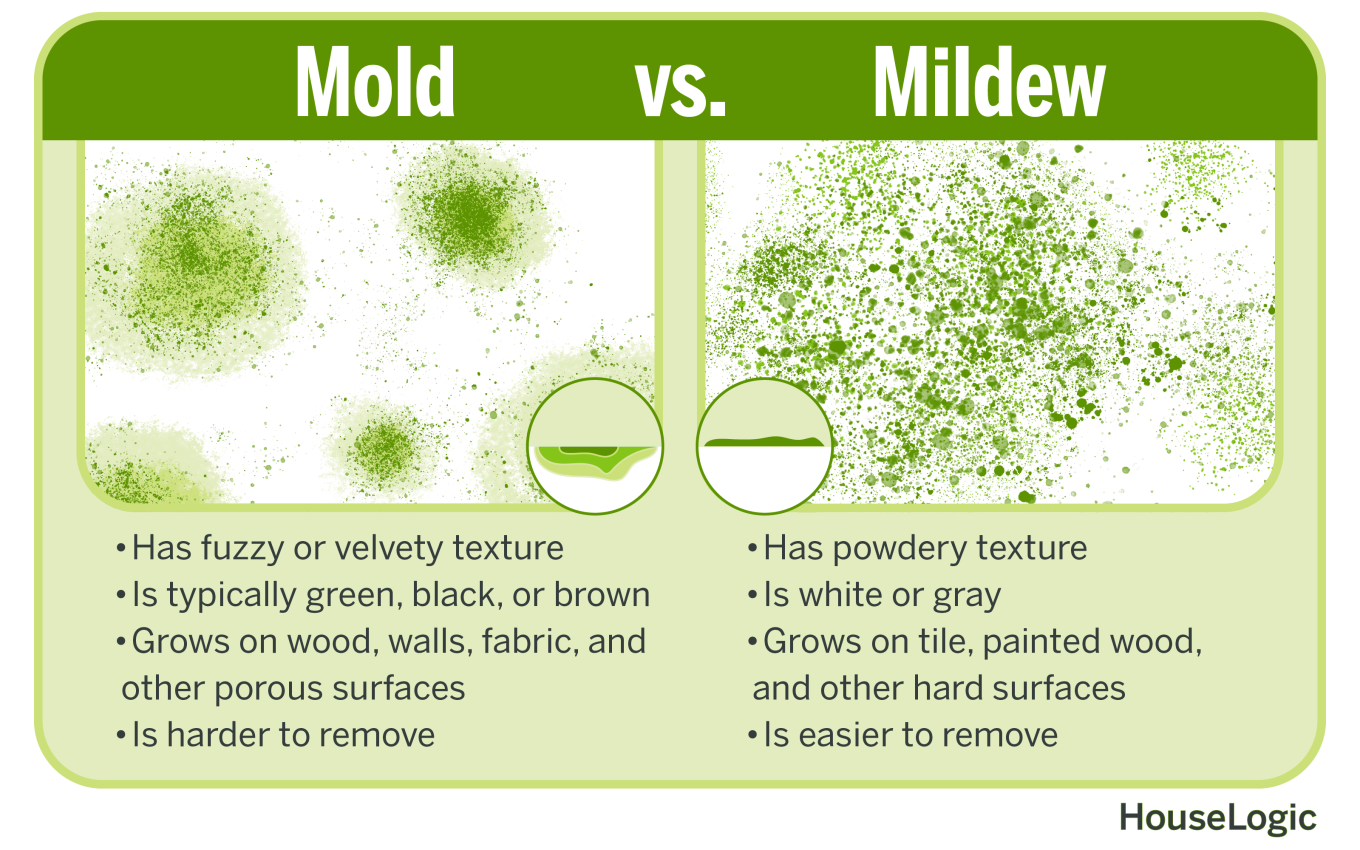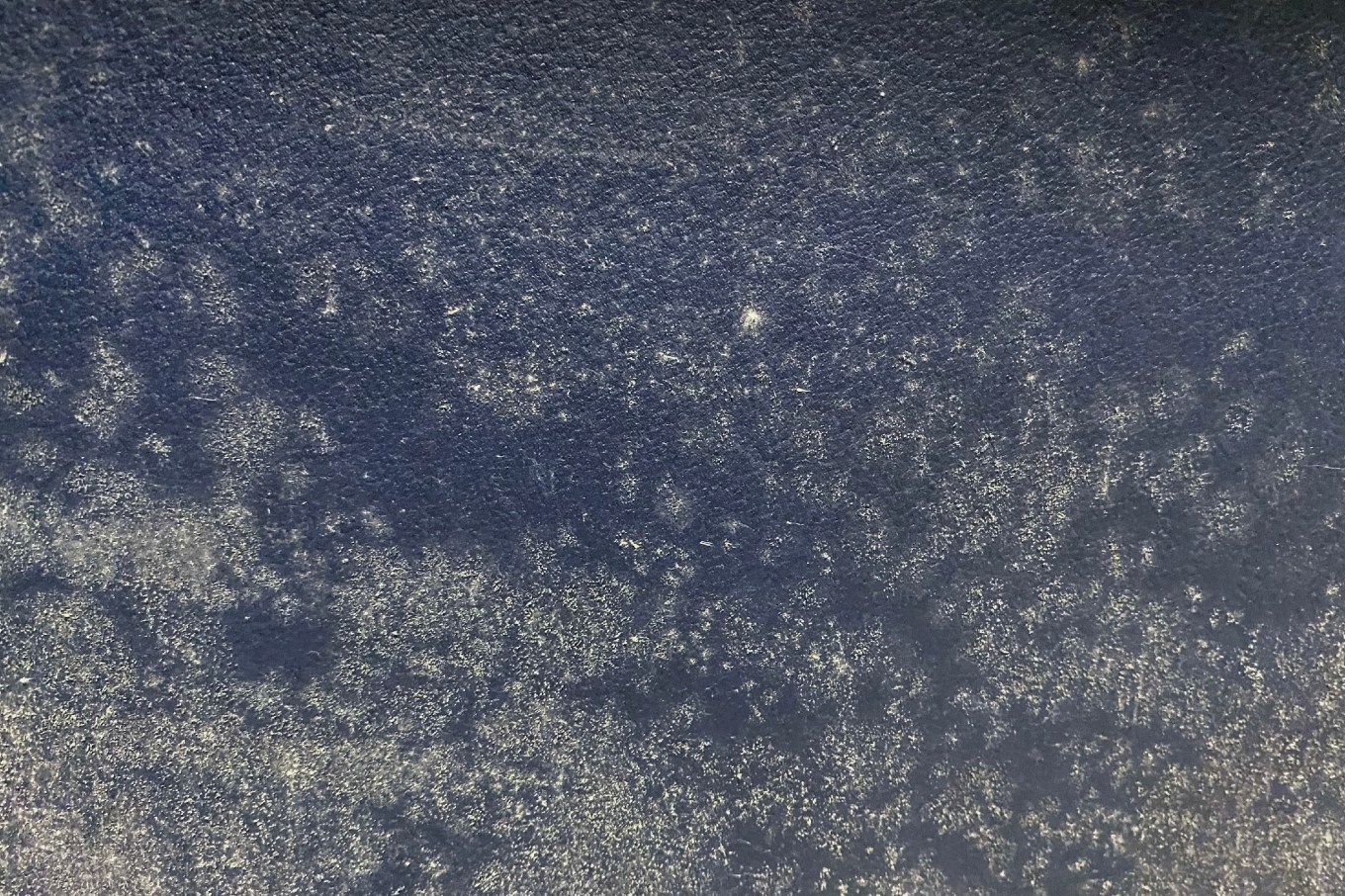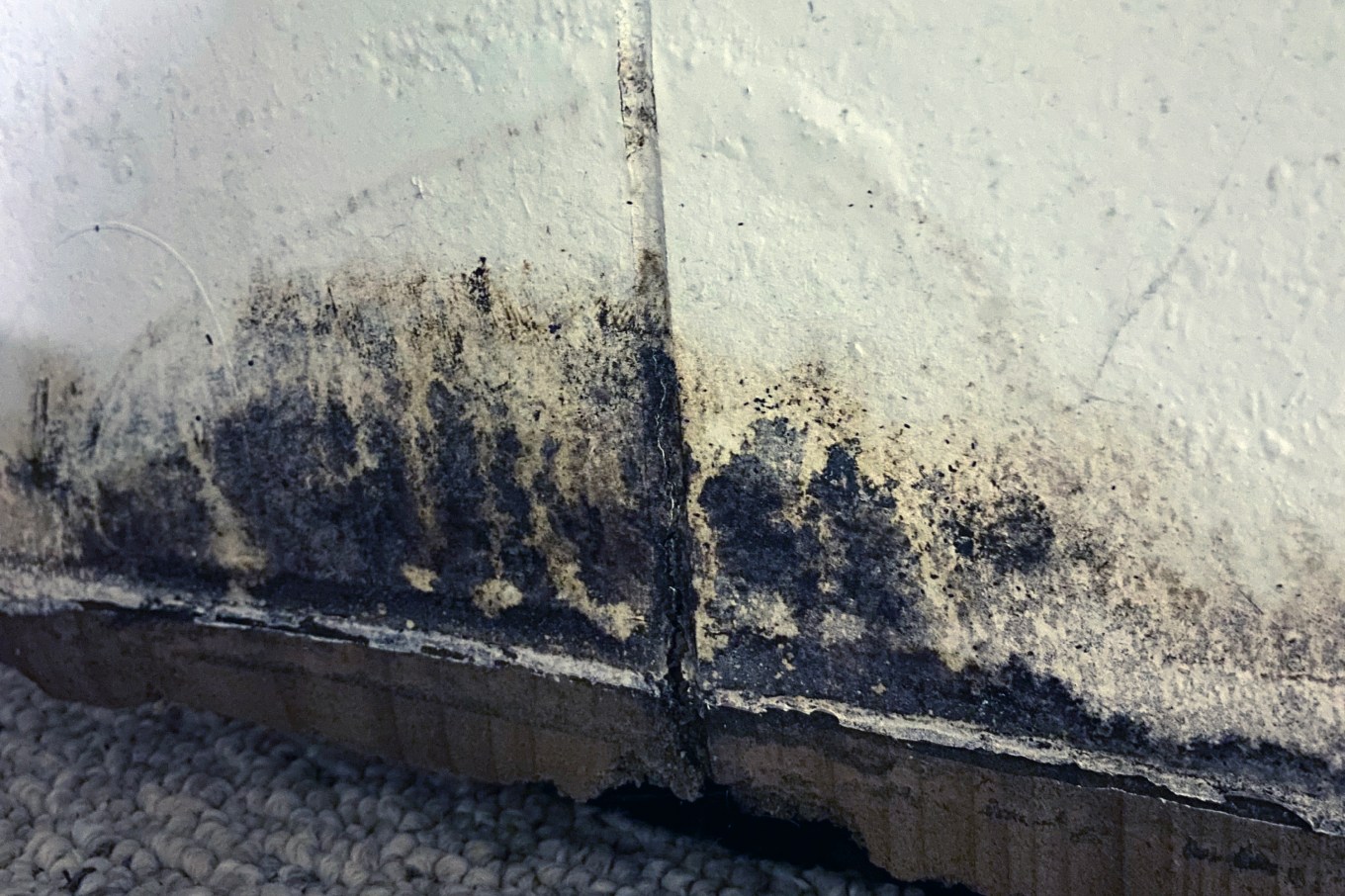Mold and mildew are two distinct fungi that commonly invade our homes, thriving in wet and humid conditions. While they may look similar to the untrained eye, each has unique characteristics and requires different treatment and prevention. This article delves into the subtle yet significant differences between mold and mildew so you’ll know how to identify, remove, and ultimately rule out these unwelcome guests.
The Difference Between Mildew and Mold
Understanding the differences between mildew and mold can help prevent further spread across your home.

Here’s a quick reference guide:
Mold is typically fuzzy or velvety and can appear in various colors, like green, black, or brown patches. It thrives in damp environments and can cause a musty odor.
Mildew is usually white or gray and has a powdery texture. Mildew grows on hard surfaces, especially in high-moisture areas like bathrooms.
Something they both have in common? Potentially causing health issues if not addressed.
Identifying Mildew

Mildew grows on materials such as tiles and painted wood and tends to stick to areas where it can be removed with a good scrub. And it loves to lounge in wet and humid spots; think shower walls, countertops, and sink bowls.
While mildew might not sound too bad and is considered less severe than mold, that doesn’t mean you should tolerate it. A simple mixture of water and detergent can usually send mildew packing.
Identifying Mold

Mold can appear on various surfaces, including wood, fabric, walls, and a few other unexpected places in your home. It spreads in moist, dark environments or any area that has had water damage.
Mold can infiltrate deeply into materials, making it harder to remove. It’s a potential hazard to the structural integrity of your home and your and your family’s health.
Signs of Mold
Peeling paint and buckling floors could be signs of moisture and mold – not just wear and tear. Recognizing mold's presence at the earliest stage is crucial, since mold affects not just the cleanliness of your home but the very air you breathe. So, if you spot these warning signs, act right away and consult with a mold removal and remediation professional.
Here are a few key signs of mold infestation:
- Cracking or crumbling: Warping of paint, wallpaper, or other materials may indicate mold. Moisture seeping into walls can compromise material adhesion, leading to visible signs of damage. This can often signal that mold is growing on or behind the wall surfaces.
- Discoloration: Mold boldly shows its colors, often appearing as unsightly patches that can spread quickly. Look for these discolorations on walls, ceilings, carpets, and other porous textures. They're mold's calling card.
- Musty odor: Trust your nose on this one. If you smell persistent mustiness that reminds you of a damp basement, mold might be nearby.
Mold and Mildew: Health Hazards
Both mold and mildew can pose health risks, particularly for individuals with allergies, asthma, or compromised immune systems. Mold can produce allergens and irritants. Some types can produce toxic substances called mycotoxins.
With prolonged exposure, mildew can also cause health issues. It’s usually considered less dangerous, but you should still remove it or have it removed promptly.
While fungi can have value in breaking down organic matter in nature, they're not so great when they crash at your place. Inhaling mold spores can irritate your lungs, leading to coughing, wheezing, and in some cases, asthma attacks. For the sniffle-prone, mold can cause allergic reactions and fever-like symptoms.
In severe scenarios, especially for those with compromised immune systems, mold can go from a surface-level nuisance to a systemic invader, leading to infections.
Remedies for Addressing Mildew and Mold Infestation
Addressing mold and mildew involves cleaning visible growth from nonporous surfaces with water and detergent or commercial cleaning products. For extensive growth, usually considered any area that exceeds 10 square feet, or on porous materials, you may need professional remediation. It's also essential to address the underlying moisture issue to prevent a recurrence. Standing water is an open invitation for mildew to settle in.
Steps to Cleaning Mildew
Once you've identified mildew, take the following steps to clean the infected area:
- Suit up for safety: Gear up with gloves, a mask, and eyewear to protect yourself from inhaling or ingesting spores.
- Ventilate the area: Crack open those windows or get the fan running. Keeping the area well-ventilated is crucial, not just for your comfort but also to prevent the mildew from growing or spreading.
- Select a cleaning product: You can use detergent and water, a disinfectant, store-bought mildew cleaner, or a cleaning agent that’s tough on mildew but gentle on your surfaces—and conscience. (Pro Tip: Hydrogen peroxide can be used to clean mildew.)
- Scrub thoroughly: Arm yourself with a soft brush or cloth and apply your chosen cleaner. Scrub to remove any visible residues.
- Rinse and dry: Rinse the cleaned area with water and ensure it's completely dry. Mildew despises dryness (it’s the simplest yet most effective deterrent.)
While mildew might seem like a mild-mannered enemy, underestimating it can lead to bigger or more persistent cases.
Steps to Cleaning Mold
If you or a professional has identified mold in your house, follow these guidelines for cleaning and removing it.
- Safety first: Before you do anything, protect yourself. Mold isn’t just unsightly; it can be harmful. Wearing gloves, a high-quality mask (N95 or better), and protective eyewear is non-negotiable. Remember, you’re not just cleaning; you’re safeguarding your health.
- Assess the situation: Mold can be a sign of more significant issues. If you’re facing extensive mold over a large area (more than 10 square feet), or if the mold is caused by sewage or contaminated water, this is a job for professionals. Stop and contact your local mold remediation professionals.
- Use ventilation: Like its cousin mildew, mold dislikes fresh air. Open windows or use an exhaust fan to keep the air moving. However, take precautions to avoid spreading mold spores by containing the area using plastic sheets to seal off the affected area. And consider using disposable cleaning materials and discarding them immediately after use.
- Choose your cleaning solution: If you’re dealing with a small, manageable area, a mixture of water and detergent can generally work for nonporous surface mold. For porous surfaces, professional judgment is critical.
- Start scrubbing: Using a stiff brush, carefully apply your solution to the moldy area. Be thorough but gentle to avoid damaging the surface or dispersing spores into the air.
- Rinse, dry, and evaluate: After scrubbing, rinse the area well and dry it completely. Mold loves moisture, so, as with mildew, your best defense is keeping things dry. If the mold growth persists or if you’re at all uncertain of the completeness of removal, call in the experts.
- Get professional help: Mold removal is often not a DIY task. Professionals can remove mold more effectively and address the root cause, preventing future growth.
Dealing with mold is serious business. While some small areas can be managed with careful DIY efforts, you’ll likely need professional mold removal services for comprehensive treatment. Protecting your home means protecting your health and well-being.
Combating Mold and Mildew in Your Home
We've covered the damp and musty world of fungi, distinguishing between mold and mildew. Keep your eyes peeled for those telltale signs of discoloration and that musty odor. If you find yourself in a tough spot, call in the pros or tackle it with a trusted detergent.
